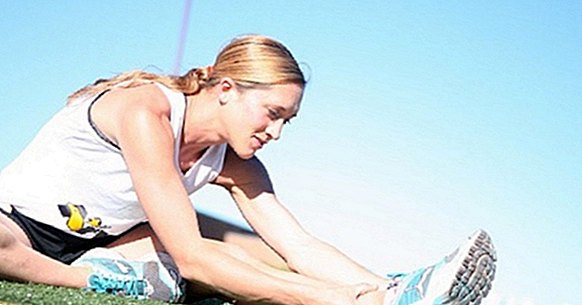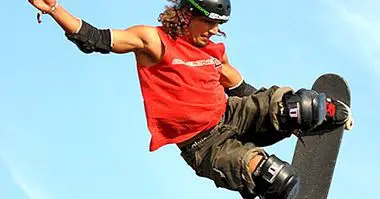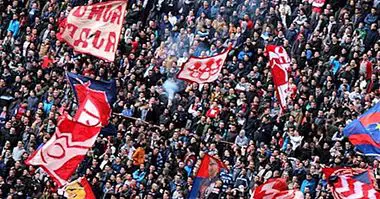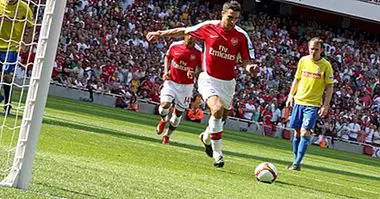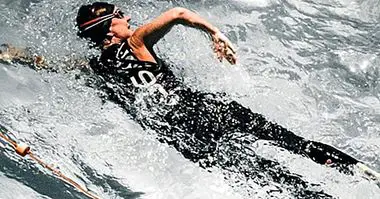Stress of the athlete after an injury
The psychology of sports not only care about the performance that an athlete has while he is active; He is also present during the sports injury. In recent years due to the professionalization of some sports has grown the number of studies about this area that have been published.
This has focused attention on both the prevention of injuries and their treatment and rehabilitation to the sport once these breaks have occurred. Specifically, stress management is very important to help the performance does not decay .
- Related article: "What is Sports Psychology? Know the secrets of a growing discipline"
Psychological intervention in cases of sports injury
We find two moments in the sports injury ; one that is prior to the injury and corresponds to a prevention phase, and a second that would occur after the injury in which rehabilitation would enter. It is important to keep this in mind because in the face of the intervention the objectives that are going to be addressed are different.
In the first, the sports psychologist is responsible for training psychological resources, seeking an optimal level of muscle tension, a reduction in stress, a proper attention control and improvement of coping resources in order to avoid the dreaded injury.
In the post-injury or rehabilitation phase, the objectives vary according to whether the lesion is more or less recent ; In the immobilization phase the objective will be to give the athlete strategies to control anxiety and acceptance of reality. For this it is common for the sports psychologist to train communication skills and relaxation techniques, in addition to ensuring a therapeutic commitment.
In the mobilization phase the objective will be to perform a correct recovery, readaptation and return to competition , working for it the communication skills, the relaxation techniques and mental images and the control of the anxiety, being of vital importance the social support.
The causes
Numerous studies agree on the existence of two categories to which an injury may be due .
The extrinsic factors would be those environmental factors. They refer to the team, the environment where the activity is practiced, the duration of training and the failures in physical preparation. The second ones are the intrinsic factors that have their nature in the personal characteristics of the athlete. They include age, sex, physical constitution, previous medical history, physical condition, ability and psychological state.
As for the latter, unfortunately, It is common to get worse depending on the severity of the injury and the estimated time for recovery . Therefore, when the athlete has achieved his full recovery, when facing his normal activity again, he often finds that what previously seemed an ambitious challenge, now causes stress.
Injuries and stress in sports
If we review the literature we find that Andersen and Williams (1988) devised a model in which it was proposed that the stress response was the result of a bidirectional relationship between the cognitive evaluations of the athlete about an external situation (environmental factors) potentially stressful, and the physiological and attentional aspects of stress (intrinsic factors), where both these cognitive assessments and the physiological and attentional responses to stress are constantly changing.
This model has also tried to explain the relationship between psychological factors and vulnerability to injury, including their sporting history, but also the emotional reactions of the injured athlete. Thanks to this, it has been possible to carry out psychological intervention for injury prevention or rehabilitation and sports rehabilitation of the injured athlete.
The role of anxiety in sports performance
In this interaction between psychology-injury-psychology some of the relevant variables in the competitive field are the athlete's anxiety and state of mind. Numerous studies have been conducted in almost all sports modalities about pre-competitive anxiety and the state of mind in which athletes meet before competing. It has been shown that this does not affect all athletes equally .
Factors that influence stress
There are a series of conditions in which stress and fear of failure are aggravated. The age of athletes influences the appearance of stress, being more prone to suffer stress the youngest (10 to 19 years) and the oldest (from 40).
It must also be taken into account that this stress condition would not affect equally those who practice physical activity for leisure and those who are engaged in competition .
Psychological interventions after injury improve the well-being of the athlete during rehabilitation. The control of their emotional responses in this unfavorable situation will allow a better and faster recovery whose main objective is the effective sports rehabilitation.
Podlog et al. (2011) found that The most frequent variables that act against the athlete are : the anxiety of a relapse, the fear of not returning to the previous performance, feelings of isolation, the lack of identification with their sports practice, insufficient social support from others or of the sports field and the excessive pressure that causes negative feelings such as fear , anger, sadness.
Therefore, in order to work towards the psychological preparation behind an injury, it is important to assess:
- Situations outside the sports environment that can cause stress to the athlete.
- The demands that are specific to training.
- The demands of competition.
- Previous history of injuries.
- Influence of the public or the media on the athlete (if applicable).
Intervening about anxiety
Psychological interventions such as relaxation, mental images, proper accompaniment by the technical team (coach and colleagues), determination of objectives (clear, evaluable and progressive), favor family social support directly or indirectly , couple and friends, are essential to carry out training in stress management.
Neither should forget important aspects such as strengthening the membership of the sport you are practicing, reduce pressure and improve self-confidence. (Palmi, 2001; Podlog et al., 2011).
It is possible that the intervention should also focus on the modification of beliefs and attitudes to prevent future injuries. It is not strange that during training the self-perception of the athlete has been altered and this has generated distorted beliefs of their new physical condition.
Thoughts like "as soon as they touch me a bit, I get injured again" leave a bad feeling in the athlete and this can have consequences in the execution of a training or a later competition.
Support and reinforcement program
As mentioned, family support with a good reinforcement program it can contribute to improve the self-esteem of the injured athlete and to make him feel capable of resuming his sporting life.
Are those moments that one does not question when presented with an athletic and sporting life ahead. But when it happens you have to accept it and take it as a new challenge. One more training

